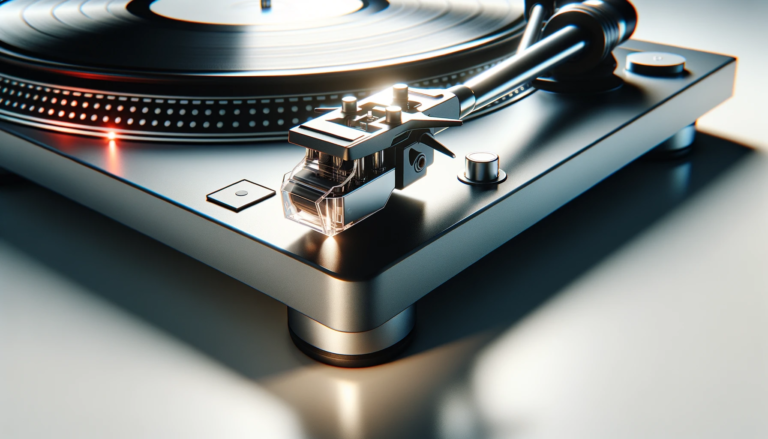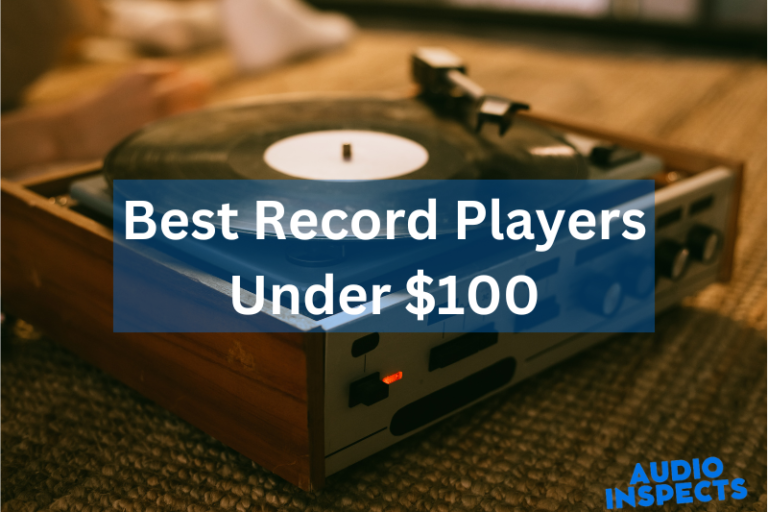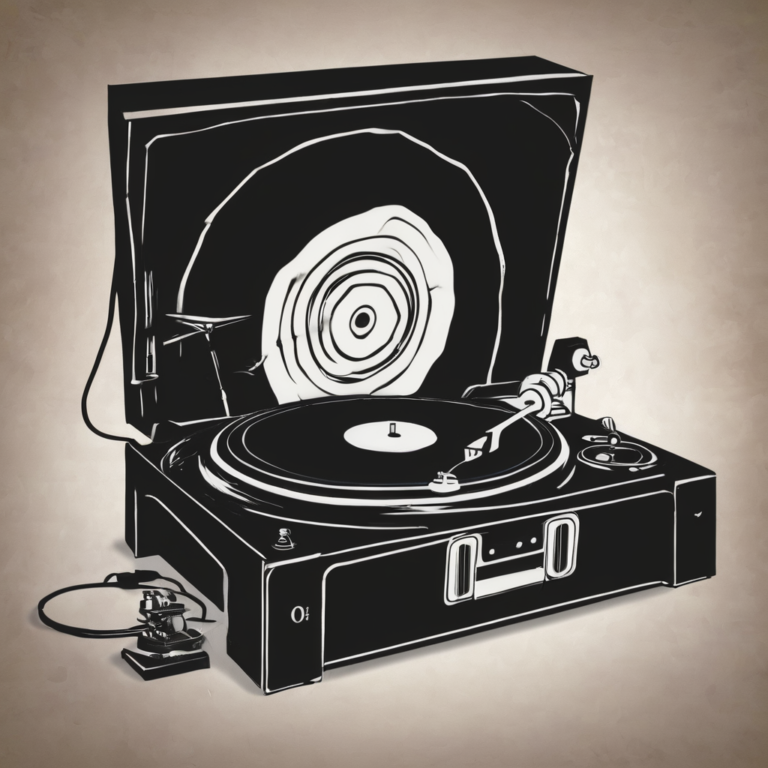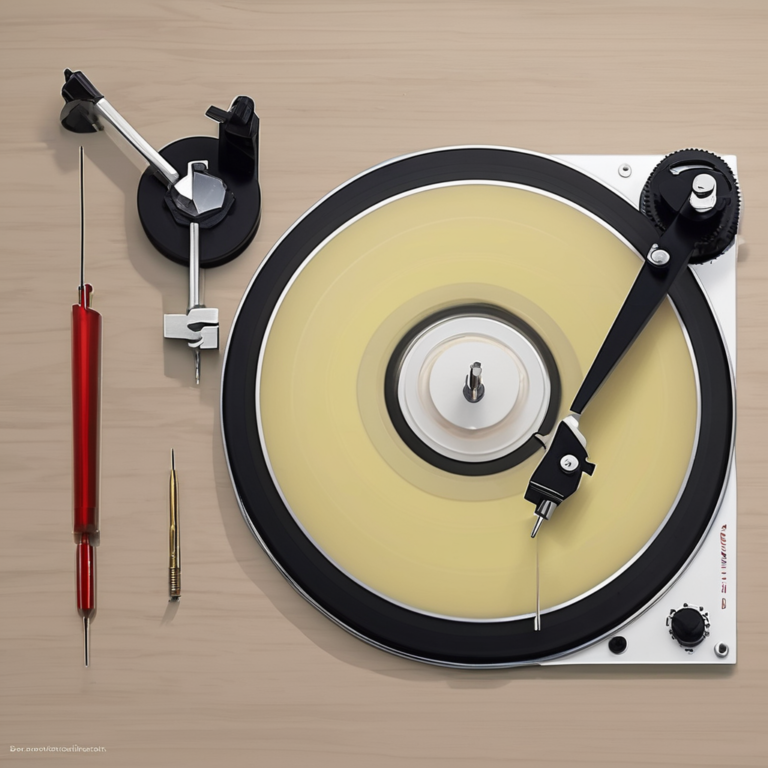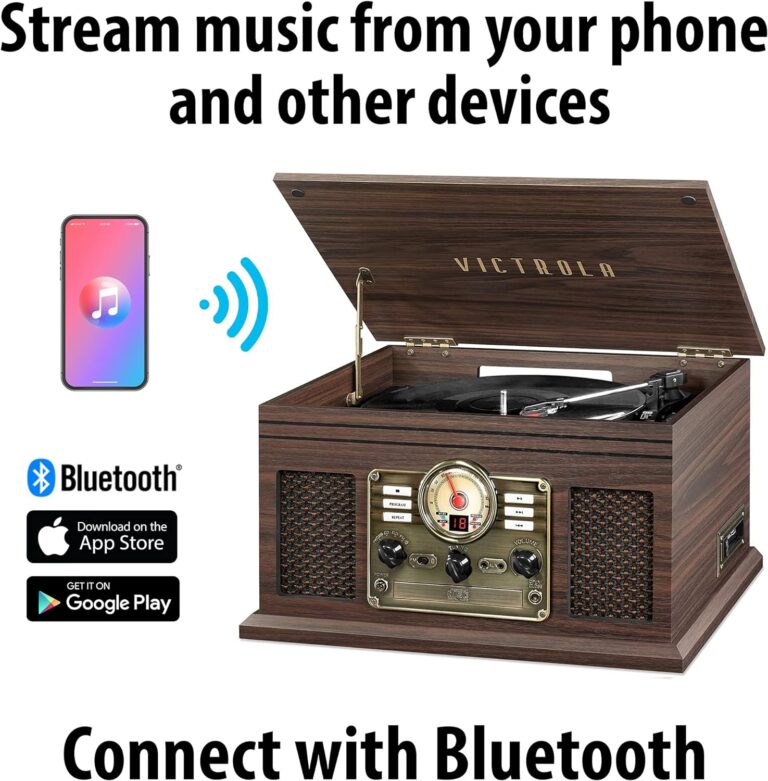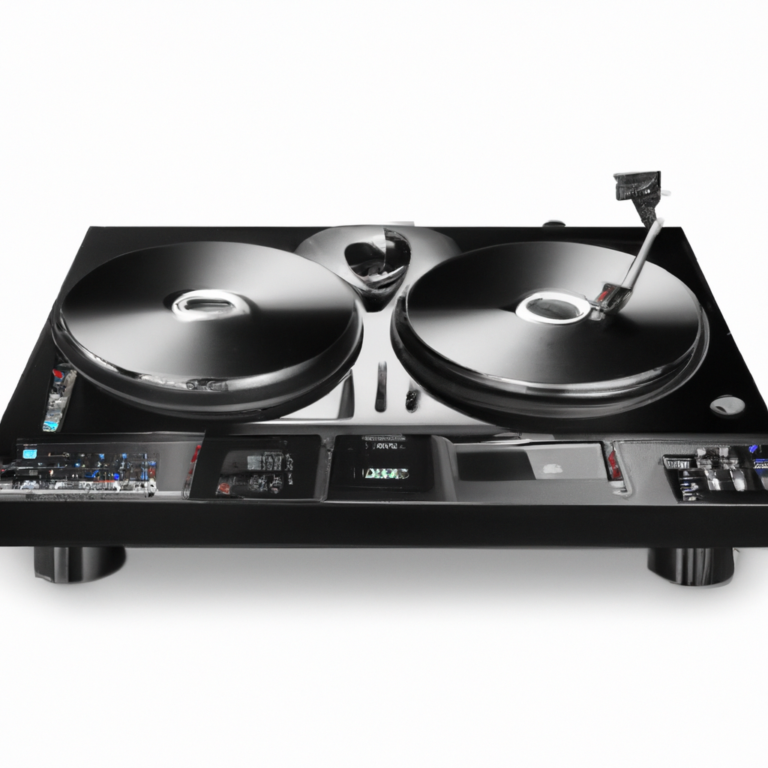How to Buy a Record Player
Are you ready to experience the warm sound and nostalgic charm of vinyl records? Buying a record player can be a thrilling and rewarding experience, but it can also be overwhelming with the wide range of options available in the market. Don’t worry, I’m here to guide you through the process and help you find the perfect record player that suits your needs and budget.
Firstly, it’s important to determine your budget and the type of record player you’re looking for. Consider whether you want a modern turntable or a vintage one and whether you prefer a manual or automatic player. Keep in mind that while vintage record players can add a touch of nostalgia to your music experience, they may require more maintenance and could be pricier. On the other hand, modern turntables offer convenience and often come with additional features like built-in speakers or USB connectivity for digitizing your vinyl collection.
Next, consider the key features that matter to you. Do you prioritize sound quality, ease of use, or portability? Do you want a record player that can play different vinyl sizes or one that offers adjustable tracking force? Research the different brands and models available, read customer reviews, and compare specifications to make an informed decision. Additionally, if you’re new to vinyl, don’t forget to factor in the cost of purchasing additional accessories such as speakers, a preamp, and cleaning supplies.
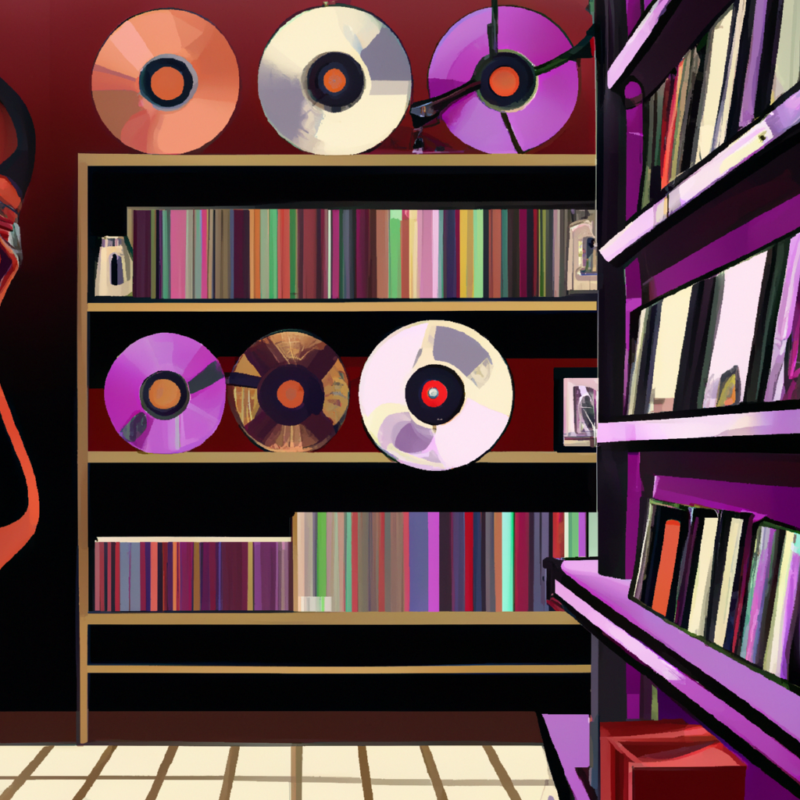
Types of Record Players
When it comes to record players, there are various types to choose from. Two popular options are belt-drive and direct-drive turntables. While belt-drive models offer smoother sound reproduction, direct-drive turntables provide better speed stability. Another aspect to consider is whether you prefer a manual or automatic record player. Manual models allow you to manually place the needle on the record, while automatic ones do this for you. Additionally, it’s important to understand the different components of record players, such as the platter, tonearm, and cartridge.
Belt-Drive vs. Direct-Drive
Moving on to the next topic of discussion, let’s delve into the types of record players available in the market today. One important distinction to make is the difference between Belt-Drive and Direct-Drive record players.
Belt-Drive record players are characterized by their smooth and quiet operation. They feature a rubber belt that connects the motor to the turntable, allowing for a more isolated rotation. This isolation reduces any potential vibrations or motor noise, resulting in a cleaner and more accurate sound reproduction. Belt-Drive record players are often favored by audiophiles and music enthusiasts who prioritize the quality of sound.
On the other hand, Direct-Drive record players are known for their durability and stability. Instead of using a belt, these record players have a motor directly integrated into the turntable. This direct connection ensures a consistent and steady rotation, making them ideal for DJs and individuals who engage in scratching or other forms of turntablism. Direct-Drive record players are generally more robust and less prone to wear and tear.
Both types have their pros and cons, and the choice ultimately depends on your specific needs and preferences. If you value pristine audio quality and a more refined listening experience, a Belt-Drive record player might be the right choice for you.
Manual vs. Automatic
Now that we understand the differences between belt-drive and direct-drive record players, let’s dive into the next topic: manual vs. automatic record players.
Manual record players require the listener to manually move the tonearm onto the record and cue the needle onto the grooves. This hands-on approach can be quite satisfying for audiophiles who enjoy the process of setting up their turntable and engaging with their vinyl collection. The manual operation also gives the listener more control over the playback experience, allowing them to carefully handle their records and ensure that the needle is placed accurately.
On the other hand, automatic record players offer a more convenient and user-friendly experience. With automatic record players, the tonearm automatically lifts and lowers onto the record, and the needle is placed onto the grooves with just the push of a button. This feature is especially appealing to those who prefer a hassle-free listening experience or have limited mobility.
However, it’s important to note that automatic record players may not be suitable for all types of vinyl records. Some records, particularly older or more fragile ones, may require a gentler touch and manual handling to prevent any damage. Additionally, some audiophiles argue that the automatic operation can introduce additional vibrations and affect sound quality.
Record Player Components
Moving on to the topic of record player components, it is important to understand the different parts that make up these fascinating devices. Each component plays a crucial role in the overall performance and sound quality of a record player.
First and foremost, we have the turntable itself. This is where the magic happens. The turntable consists of a platter, which spins at a constant speed, and a tonearm, which holds the cartridge that contains the stylus. The stylus is the needle that actually makes contact with the grooves of the record, translating the physical vibrations into electrical signals.
Next, we have the cartridge. This small but mighty component is responsible for converting the mechanical vibrations of the stylus into electrical signals. There are different types of cartridges available, each with its own unique characteristics and sound qualities.
Another essential component is the phono preamp, also known as the phono stage or phono equalizer. This device amplifies the delicate electrical signals produced by the cartridge and prepares them for further amplification by the main amplifier or receiver. Some record players have built-in phono preamps, while others require an external one.
Lastly, we have the plinth or chassis, which is the base of the record player.
Features to Consider
When considering features for a turntable, there are several important factors to keep in mind. First, speeds are crucial as they determine compatibility with different vinyl records. Look for a turntable that offers both 33 1/3 RPM and 45 RPM. Second, pre-amps are essential for amplifying the signal from the turntable to your speakers. A built-in preamp can simplify your setup, but if you already have a separate preamp, make sure the turntable has a phono output. Third, cartridges play a significant role in sound quality, so choose one that suits your preferences.
Speeds
Now that we have discussed the different types of record players, let’s delve into the features you should consider when choosing one for yourself. The first feature to consider is the speed at which the record player operates.
Record players typically come with three speed options: 33 1/3, 45, and 78 RPM (Rotations Per Minute). These speeds correspond to the different types of vinyl records available. The most common speed is 33 1/3 RPM, which is used for long-playing (LP) records. If you have a collection of 12-inch LPs, then a record player with this speed option is a must-have.
The next speed option, 45 RPM, is used for 7-inch singles and EPs (Extended Plays). These smaller records require a faster speed to accurately reproduce the music recorded on them. So, if you have a collection of singles or EPs, make sure the record player you choose has a 45 RPM option.
Lastly, there is the 78 RPM speed, which is used for older shellac records. These records were common before the introduction of vinyl records. If you happen to have a collection of these vintage records, you will need a record player that can accommodate this speed.
Pre-Amps
Now that we have discussed the different types of record players, let’s dive into the important features to consider when purchasing one. One crucial aspect to look into is the pre-amp.
A pre-amp, short for pre-amplifier, is an essential component in a record player that boosts the signal coming from the turntable to a level that can be properly amplified by your speakers or headphones. It ensures that you get the best sound quality possible.
When it comes to pre-amps, you have two options: built-in or external. Built-in pre-amps are convenient as they are already integrated into the record player, allowing you to connect it directly to your audio system without the need for an additional device. On the other hand, external pre-amps offer more flexibility and allow you to upgrade or change the pre-amp separately from the record player.
The quality of the pre-amp is crucial in determining the overall sound performance of your record player. A good pre-amp will provide clean amplification without introducing any noise or distortion. It will enhance the nuances and details in the music, delivering a more immersive listening experience.
When considering the pre-amp, it’s important to also take into account the other components of your audio system.
Cartridges
Moving on to another important feature to consider when choosing a record player: cartridges.
Cartridges play a crucial role in the sound quality of your record player. They are responsible for translating the grooves on the vinyl into electrical signals that can be amplified and played through your speakers. There are two main types of cartridges: moving magnet (MM) and moving coil (MC).
Moving magnet cartridges are more common and generally less expensive. They have a replaceable stylus, which is the needle that actually touches the vinyl, making it easy to upgrade or replace if needed. They also tend to have a warmer sound and are more forgiving of less-than-ideal vinyl conditions.
Moving coil cartridges, on the other hand, are known for their exceptional sound quality and accuracy. They produce a more detailed and precise sound reproduction, but they can be more expensive and harder to replace if the stylus wears out. However, many audiophiles believe that the extra cost is worth it for the improved audio experience.
When choosing a cartridge, it’s important to consider your listening preferences and budget. If you’re just starting out or on a tighter budget, a moving magnet cartridge might be a good option.
Prices
When it comes to record players, the prices can vary depending on several factors. If you’re on a budget, you can find some great options for under $100. These players may not have all the fancy features, but they still deliver good sound quality. If you’re willing to spend a bit more, the under $200 range offers even better performance and additional features. However, if you’re looking for top-of-the-line quality and advanced features, you’ll need to consider record players over $200.
Record Players Under $100
After considering the various features that are important in a record player, let’s now focus on the price range of record players. One of the most affordable options available in the market is record players under $100. These budget-friendly record players are perfect for those who are just starting to build their vinyl collection or for individuals who are on a tight budget.
Even though they fall in the lower price range, these record players still offer decent sound quality and reliable performance. They may not have all the advanced features of higher-end models, but they get the job done. You can expect a basic turntable with manual operation and a built-in preamp at this price point.
When it comes to record players under $100, there are several reputable brands to choose from. Some popular options include Audio-Technica, Crosley, and Sony. These brands are known for their affordable yet reliable record players.
*It’s important to note that record players in this price range may not have the same durability and longevity as higher-end models. However, with proper care and maintenance, they can still provide you with hours of enjoyment.
Record Players Under $200
Now that we have covered the features to consider when purchasing a record player, let’s dive into the world of prices. One of the most appealing aspects of record players is that they come in a wide range of prices, making it accessible for everyone to enjoy the nostalgic sound of vinyl.
If you are on a budget or just starting in the world of vinyl, there are plenty of excellent options available for under $200. These record players offer great sound quality and reliable performance without breaking the bank.
In this price range, you can find models from reputable brands such as Audio-Technica, Sony, and Crosley. These record players often come with built-in speakers, making them convenient and easy to set up. Additionally, they may have features like USB connectivity, allowing you to digitize your vinyl collection.
While the record players in this price range may not have all the advanced features found in higher-priced models, they still provide a satisfying and enjoyable listening experience. They are perfect for casual listeners or those who are just starting to explore the world of vinyl.
When considering record players under $200, it is essential to read reviews and compare different models to ensure you are getting the best value for your money.
Record Players over $200
While record players under $100 and $200 can be great options for those on a budget, sometimes you just want to splurge a little and get a record player that truly stands out. If you’re looking for a top-of-the-line record player that offers exceptional sound quality and advanced features, then look no further than the record players over $200.
Record players over $200 are the cream of the crop when it comes to audio performance and build quality. These models are often crafted with precision and attention to detail, ensuring that every note and nuance of your vinyl records are faithfully reproduced. With higher-end record players, you can expect superior components such as high-quality tonearms, premium cartridges, and robust platters that reduce vibration and provide a more stable rotation.
In addition to their superior sound quality, record players over $200 often come with a wide range of advanced features. Some models offer built-in Bluetooth connectivity, allowing you to wirelessly stream music from your smartphone or other devices. Others may have USB ports for easy digitization of your vinyl collection, or even integrated speakers for a compact all-in-one solution.
However, it’s important to note that record players in this price range are considered more of an investment.
Shopping Tips
When it comes to shopping for a record player, there are a few key tips to keep in mind. First, research popular models to see which ones have the features you’re looking for. Check out reviews and ratings from other customers to get a sense of the quality and reliability of the record player. If you’re on a budget, consider buying used to save some money. Make sure to look for record players with features that meet your needs. Lastly, don’t forget to consider the warranty and customer support options in case you need assistance down the line.
Research Popular Models
So, you’ve decided to buy a record player and step into the world of vinyl music. Congratulations! Now, it’s time to do some research and find the perfect model that suits your needs and preferences. When it comes to purchasing any electronic device, it’s essential to stay informed about the latest trends and innovations in the market.
Researching popular models is an important step in making a well-informed decision. Start by exploring different brands and their offerings. Look for record players that have a good reputation and positive reviews from customers. Pay attention to the features they offer, such as built-in speakers, Bluetooth connectivity, and USB ports for digitizing your vinyl collection.
You can also consider reading articles and blogs dedicated to record players. These sources often provide detailed comparisons between different models, highlighting their strengths and weaknesses. Additionally, online forums and communities can be valuable resources for gathering insights from experienced vinyl enthusiasts.
Another useful approach is to consult with friends or colleagues who already own record players. They can share their experiences and recommend models that they have had a positive experience with.
By conducting thorough research on popular models, you will gain a better understanding of the options available in the market.
Check Reviews and Ratings
Now that you have a good understanding of record player prices, let’s move on to the next important step in your shopping journey: checking reviews and ratings.
Checking reviews and ratings is crucial when it comes to making an informed decision about which record player to purchase. Reading honest reviews from other customers who have already bought and used the product can provide valuable insights into its performance, durability, and overall quality.
Before making a final decision, take the time to research popular models and see what others are saying about them. Look for reviews that highlight both the positive and negative aspects of each record player. This will give you a more balanced perspective and help you weigh the pros and cons before making a purchase.
Ratings are another important factor to consider. Pay attention to the overall rating of the record player and also look at specific ratings for different features, such as sound quality, ease of use, and build quality. A high overall rating coupled with positive ratings for the features that matter most to you can give you confidence in your decision.
Remember, reviews and ratings serve as a guide, but ultimately, your personal preferences and needs should be the deciding factors. A record player that may work well for one person may not necessarily meet your specific requirements.
Consider Buying Used
Now that you’ve done your research on prices and have a good understanding of what to look for in a record player, it’s time to consider buying a used one. Buying a used record player can be a great option for those who are on a budget or looking for a vintage model.
Research Popular Models: Start by researching popular models that are known for their durability and quality. Look for brands that have a good reputation and a history of producing reliable record players. This will help you narrow down your options and ensure that you are getting a good deal.
Check Reviews and Ratings: Once you have a few models in mind, check online reviews and ratings to see what other people have to say about them. This will give you an idea of any potential issues or drawbacks that you should be aware of before making a purchase.
Consider Buying Used: When buying a used record player, it’s important to thoroughly inspect the item before making a decision. Look for any signs of wear and tear, such as scratches or dents. Test out the player to ensure that it is in good working condition and that all the features are functioning properly.
Look for record players with features that meet your needs: Consider the features that are important to you, such as a built-in preamp or Bluetooth connectivity.
Maintenance
Maintaining your record player is crucial for optimal performance and longevity. Cleaning your record player is the first step in maintenance. Regularly dusting the surface, using a soft cloth, will prevent buildup. Replacing parts is necessary if you encounter issues like skipping or static. Consult the user manual or seek professional help for guidance. Troubleshooting issues such as a slow motor or distorted sound requires careful examination and adjustment. Motor maintenance ensures smooth operation and can be achieved by lubricating the motor as recommended by the manufacturer. Additionally, record cleaning is essential to remove dirt and debris from your vinyl, preserving their sound quality.
Cleaning Your Record Player
Now that you have purchased your record player and enjoyed countless hours of music, it is important to keep it in tip-top shape. Regular maintenance and cleaning will not only extend the lifespan of your beloved record player but also enhance the sound quality of your vinyl collection.
Cleaning your record player may seem like a mundane task, but it is crucial for preserving the longevity and performance of your device. Dust, dirt, and debris can accumulate on the stylus, tonearm, platter, and other components, causing distortion and skipping.
To begin, start by gently dusting the surface of your record player with a soft, lint-free cloth. Avoid using any abrasive or chemical-based cleaners as they may damage delicate components. For hard-to-reach areas, use a small brush with soft bristles.
Next, focus on cleaning the stylus. Carefully remove any visible dust or debris using a stylus brush or a specialized cleaning solution. Remember to clean the stylus from back to front, never side to side, to prevent any damage.
After cleaning the stylus, it’s time to clean the records themselves. Avoid using harsh chemicals or solvents, as they can damage the vinyl.
Replacing Parts
Now that you’ve learned some valuable shopping tips for buying a record player, it’s time to move on to the next crucial step: maintenance. Taking care of your record player is essential to keep it in top shape and ensure that you enjoy high-quality sound for years to come. In this section, we will guide you through the process of replacing parts on your record player.
Over time, certain components of your record player may start to wear out or become damaged. When this happens, it’s important to replace them promptly to avoid any further issues. One of the most common parts that may need replacing is the stylus or needle. This small but vital component is responsible for reading the grooves on your records and translating them into sound. If you notice any distortion or skipping while playing your records, it may be time to replace the stylus.
Another part that may require replacement is the cartridge. The cartridge is responsible for holding the stylus and converting the mechanical vibrations into electrical signals. If you’re experiencing poor sound quality or issues with tracking, it may be worth replacing the cartridge.
When it comes to replacing parts, it’s essential to choose high-quality replacements that are compatible with your specific record player model.
Troubleshooting Issues
Now that you have your shiny new record player set up and playing your favorite vinyl records, it’s time to address some common troubleshooting issues that may arise. Don’t worry, with a little know-how, these problems can be easily resolved.
One common issue you may encounter is skipping or jumping records. This can be caused by a few different factors. First, check the condition of your records. Scratches, dirt, or dust can cause the needle to skip. Make sure to clean your records regularly using a record cleaning solution and a soft brush. Also, check the alignment of the needle. If it’s not properly aligned, it can cause skipping. Adjusting the needle can usually solve this problem.
Another issue you may face is poor sound quality or distortion. This can occur if the stylus is worn out or damaged. In this case, replacing parts may be necessary. Replacing the stylus can greatly improve the sound quality. Additionally, make sure that your amplifier and speakers are properly connected and functioning correctly.
If your turntable is not spinning or playing at the correct speed, it could be a motor maintenance issue. The motor may need to be cleaned or lubricated to ensure smooth operation.
Conclusion
In conclusion, purchasing a record player can be an exciting endeavor, as it allows you to experience music uniquely and nostalgically. By considering the different types of record players available, such as belt-drive or direct-drive, you can find the one that best suits your needs and preferences. Additionally, it is important to pay attention to features such as built-in speakers, Bluetooth connectivity, and USB ports, as these can enhance your listening experience.
When it comes to prices, it is important to set a budget and stick to it. While record players can range in price, it is possible to find a quality option that fits within your desired price range. By shopping around and comparing prices, you can ensure that you are getting the best deal possible.
In terms of shopping tips, it is always a good idea to read reviews and do research on different brands and models before making a purchase. This will help you make an informed decision and avoid any potential disappointments. Additionally, don’t forget to consider the maintenance required for your record player. Regularly cleaning the stylus and properly storing your records can help prolong the life of your player and ensure optimal sound quality.
Overall, buying a record player can bring joy and a sense of nostalgia into your life. By following these tips and considering your personal preferences, you can find the perfect record player to start or expand your vinyl collection.
Our Mission: At AudioInspects, we are dedicated to providing the most comprehensive and authentic reviews of audio equipment on the market. We conduct independent testing and research of products, so you can make an informed decision before making a purchase. Our mission is to help you find the best audio equipment to improve your listening experience. So trust us to deliver the most reliable recommendations and advice.
Disclosure: When you do decide to make a purchase through our links, please note that we may earn a commission, but this does not affect the honesty of our reviews. You can read our affiliate disclosure in our Disclosure.

